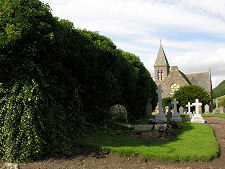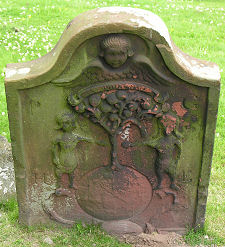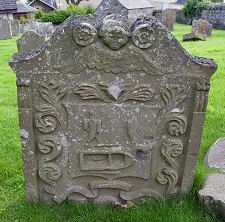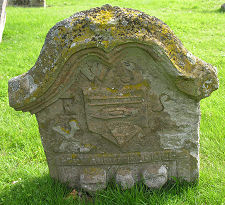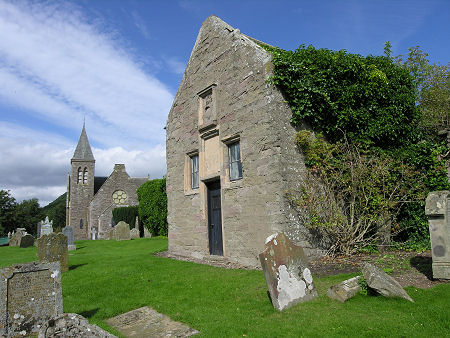 The Charteris Aisle with the Disused Parish Church Beyond |
The churchyard at Kinfauns stands on the northern slopes of the valley of the River Tay just over three miles east of the centre of Perth. In modern times the dual carriageway A90 has displaced the River Tay as the most obvious feature in the valley below, and it is worth remembering that for most of the 600 years that a church has stood on this hillside, this would have been a very much quieter place than it is today.
You reach the churchyard by a minor road north of the A90. Don't try to park near the first, eastern, gate you come to. Instead carry on past a couple more cottages until you reach the parking area once used by the congregation of the imposing, though now disused and boarded up, parish church. This was built in 1870 to a design by the architect Andrew Heiton: it's not clear when it fell out of use.
The "new" 1870 church stands in a western extension of an existing churchyard. This surrounded an earlier church, apparently built in the 1400s and remodelled after the Reformation. Today the old church survives as an oblong shape largely covered in ivy and occupied by bushes striving to become trees. The vegetation obscures any remaining detail of the building itself, especially during summer.
Surviving rather better is the Charteris Aisle. This was built in 1598 as a southern aisle on the old church. It would originally have opened out into the body of the church through an arch and provided exclusive seating for the Charteris family of Kinfauns during services, and a place for them to be buried. When the old church was unroofed, presumably after the opening of the new church in 1870, the arch was filled in, turning the Charteris Aisle into the enclosed, nearly square, building you see today. Panels inside the aisle carry eroded crests of the Charteris and Chisholm families.
Next to the east gate of the churchyard is a watchhouse, built at the start of the 1800s to help protect newly interred corpses from graverobbers. The only other building in the churchyard is a mausoleum built in 1877 against the north wall by the Lowson family of Balthayock.
Kinfauns Churchyard is home to an interesting collection of gravestones dating from the 1700s. Many of the best can be found to the south of the old church. They include an Adam and Eve gravestone dated 1782 (and so named because it carries a depiction of the Biblical story). There is also a superb gravestone of a fisherman nearby. This carries carvings of a boat and oars, and of two fish, one in the bottom of the boat and another above it. Another stone, in memory of "WS", carries images associated with the weaving trade, including a loom and a shuttle.
Near the north wall of the later part of the churchyard is a rare surviving example of an immortelle, a complex china figure standing on the grave incorporating figures, foliage and birds, covered by a glass dome and protected by a wire outer cover. Extremely fragile, these date back to the Victorian era and very few now survive intact.
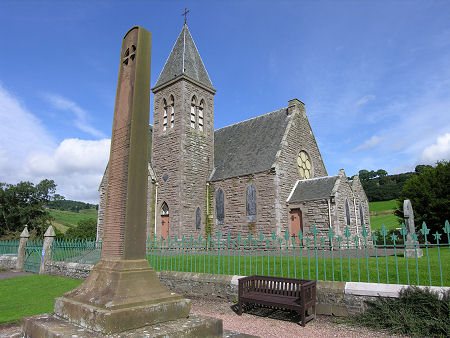 Disused Parish Church and War Memorial |
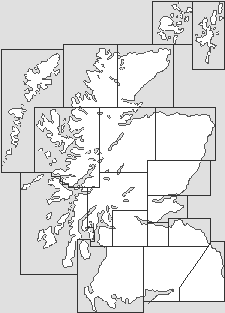
|
|
|
Visitor InformationView Location on MapGrid Ref: NO 167 223 What3Words Location: ///taps.paddock.skim |
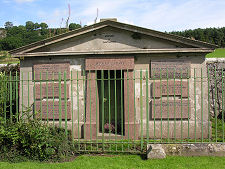 Lowson Mausoleum Lowson Mausoleum |
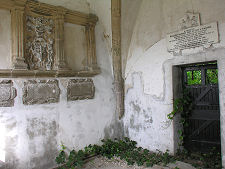 Inside the
Charteris Aisle Inside the
Charteris Aisle |
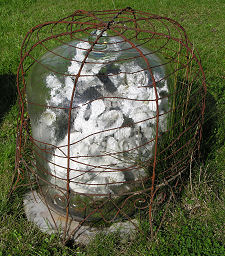 An Immortelle |
